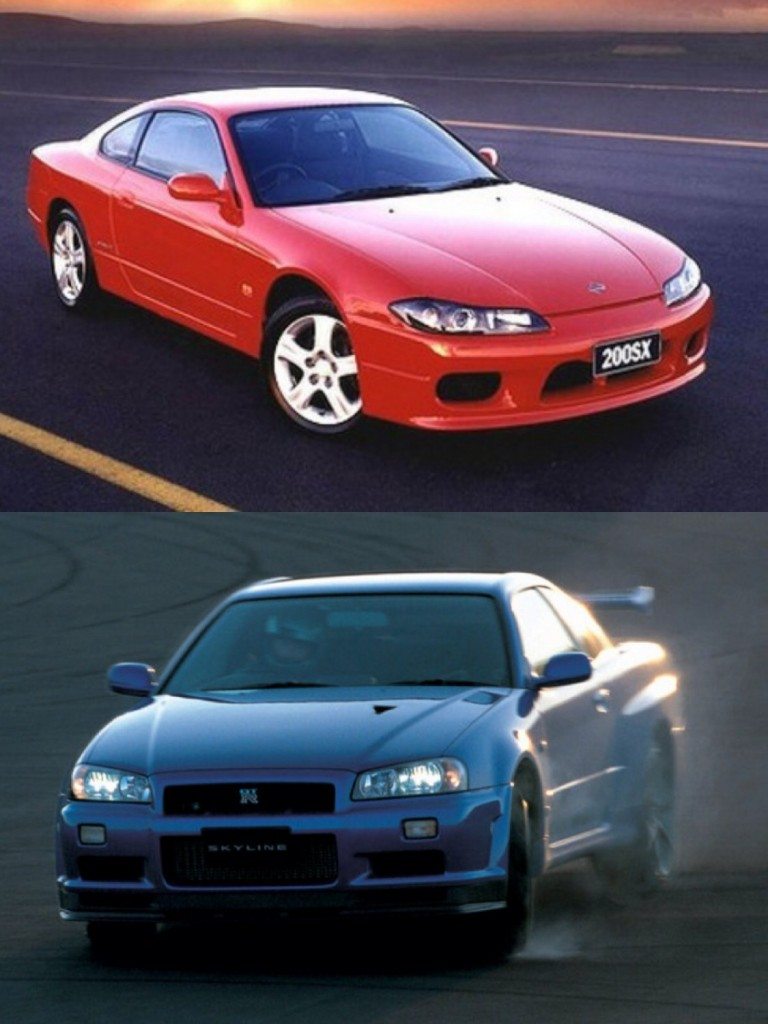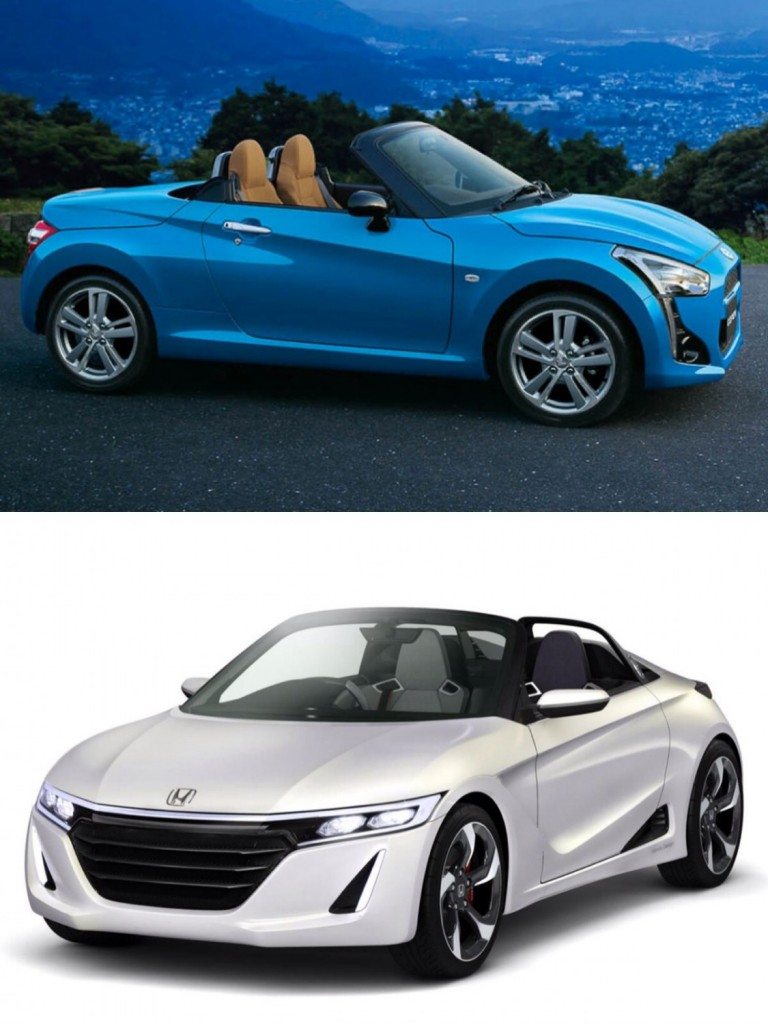I don’t know about you but I for one am very excited about the new Mazda MX-5 which is being launched this week. So it got me thinking about other Japanese sports cars past and present. It made me reminisce of a time where you were literally spoilt for choice if you wanted an affordable Japanese sports car. Whether you like them or not there’s no doubting the important role Japanese sports cars played in shaping motoring history and culture. So as a sort of tribute and celebration of these amazing cars is a short history lesson on the sports cars from the land of the rising sun.
The Japanese are new to the automotive game. The Europeans and the Americans had at least a 60 year head start to them. By the time the Japanese came out with their everyday cars, the Europeans and Americans were launching dream machines such as the Mercedes Benz 300SL, Jaguar E-Type and Chevrolet Corvette.
In 1963 Japan launched its first sports car, the Honda S500. Coincidentally the S500 was also Honda’s first car. Though powered by a minuscule 500cc engine, the S500 was genesis. The beginning of a new era in Japanese automobiles.
After the S500 paved way for Japanese sports cars, fellow companies such as Datsun, Toyota and Mazda followed suit. Cars such as the 240Z, 2000GT and Cosmo brought international attention to these fast and reliable cars.
Through the 60s and 70s the Japanese launched a number of sports cars as many as any automotive nation. Cars such as the Skyline, Celica and RX- Series were the start of a long line of legendary cars. At this stage the Japanese cars were seen to be pure copies of what the Europeans and Americans were making. And to an extent, they were. It took the Japanese a while to find their USP, but find it they did.
By the 80s the Japanese manufactures went their separate ways in pursuing the best sports cars. Mazda focused on refining the Wankel rotary engine while Nissan went ballistic with technology as demonstrated by the Z and Skyline cars. Toyota maintained a more simple approach as seen on the AE86 Corolla, though that didn’t stop them going down the tour-de-force route with the Supra. Mitsubishi and Subaru, thanks to their rally experience, concentrated on turbocharged four-wheel drive machines such as the Mitsubishi GTO and Starion.
By this time the once great British sports car industry met the same fate as the once great British empire. The Americans had gotten fat and lazy, the C3 Corvette was anything but small and nimble. The Germans’ only had Porsche at this stage and they’re cheapest car, the 924, was still beyond the reach of many. BMW, Audi, and Mercedes didn’t join in until the 90s but only because of a certain Japanese roadster. The Italians still had it going on with the likes of the Lancia Intergrale and Alfa Romeo Spider but these would soon die out in the wake of the Japanese sports cars. In the beginning the Japanese relied on the European and American sports cars but prospered in their decline. Without any rivals the Japanese were no longer copies but became the new originals.
It was in the 90s where things got interesting. Almost every Japanese car manufacturer had a sports car in their range. Toyota continued down the simple route with the likes of that mini-Ferrari, the MR2. Powered by a 1.8 VVT-I engine it was essentially the Lotus Elise of its time. Along with the MR2, Toyota also had a four-wheel drive rally-bred Celica and a twin-turbo Supra.
Mazda had two sports cars in the form of the FD RX-7 and the simple yet effective MX-5. The MX-5 was probably one of the most influential things to come out of Japan as it reintroduced the world to the small, simple and cheap roadster. Honda gave that a go with the micro Beat and later in the decade with the S2000. They also had the Prelude, Integra and of course the Senna-approved legend that is the NSX. While the NSX was the only mid-engined supercar to come out of Japan, front-engined twin-turbocharged GT cars weren’t in short supply.
Twin turbos seemed to be the craze because Mitsubishi and Nissan had them in their cars as well. The Mitsubishi 3000GTO and Lancer Evolution were spectacular displays of all that could be done by Mitsubishi, and the same can be said about the Impreza WRX STi for Subaru. The Evo and the STi became overnight sensations winning the poster wall space of adolescent boys all over the world.
But for sheer popularity and performance nothing could top the Skyline GT-R. The king, the Godzilla. With its engine size increasing every generation until we got to the R34 GT-R which had a 2.8-litre 280bhp straight six engine with, you guessed it, twin turbos. Thankfully it was a much better car than the 300ZX which brought shame to the Z family line as it was, spiritually, an American car. But it wasn’t all space age technology, Nissan had the wonderful 200SX which was about as simple as a bacon and egg pie. And as wonderful.
It should also be noted that smaller Japanese car companies gave sporty cars a go as well. Daihatsu with their wonderful little Charade GTi, Eunos with the fourth generation Cosmo. That was an interesting car as it had all the ingredients for a perfect GT cruiser; leather seats, a smooth ride, an automatic gearbox, a decent sized boot and space in the cabin. However it was powered by a rotary engine, boosted with twin turbos. Now these twin turbos weren’t your run of the mill kind. The Eunos Cosmo came out in 1990. 3 years after the Porsche 959. Now it’s not very often a Porsche and a Mazda (Eunos was Mazda’s attempt at luxury) share something in common but the Eunos and the 959 were the first two cars to have sequential turbochargers. The Eunos can claim to be the first mass produced car (though they are quite a rare sight) that has a turbo for lower revs and then another one kicks in at above 4000 revs. I’ve experienced this and it’s quite addictive. It was also the first car in Japan, in 1990, to have satellite navigation as an optional extra.
The Japanese sports cars from the 90s were the objects of desire for every schoolboy in the 00s. Nearly every bedroom wall around the world had a poster of either an Evo, STI, or GT-R on them. Pop culture and media even centred around these cars as seen in films such as Fast and Furious and various video games. Kids aspired to own these cars. They were realistic dream machines which were in closer reach than something like a Lamborghini. That’s what made these Japanese sports cars great. Don’t take my word for it, look at the market. These cars are getting recognised all around the world and are slowly appreciating in value due to their collectibility. I have a sneaking suspicion that these 90s Japanese sports cars will be future classics.
Head in the 00s and the Japanese sports car industry turned into a bit of a no-man’s land. The once plentiful Japanese sports cars that roamed the streets everywhere were now as common as a Japanese crane. Still, Toyota continued with the brilliant MR-S and Celica, though the latter became front-wheel drive. Honda phased out all but the S2000 and concentrated on their Eco technology, Mazda replaced the beautiful FD RX-7 with the mix-and-match RX-8 while the MX-5 became more macho. Nissan brought the Z back to its roots with the 350Z and in 2007 launched one of the most talked about cars in recent history, the R35 GT-R. Even Lexus brought out the M3-challenging IS-F and the Ferrari-rivalling LFA, which was simply put one of my favourite cars of the decade. Then there was the Suzuki Swift Sport, one of the biggest surprises the world had ever seen. However, one of the saddest automotive news to come out of the 00s was when the Japanese decided to pull out of Formula 1 and WRC, areas which they once dominated.
Today, the Japanese sports car are on their way back up again. Mazda have just launched the all-new fourth generation MX-5. There are even rumours of a new rotary sports car in the works, a sort of follow up to the RX-7 to coincide with the anniversary of the Cosmo and RX-7 nameplates. Toyota and Subaru launched the simply brilliant 86/BRZ twins a couple years ago whole Nissan have updated the GT-R every year since its launch in 2007. Honda has the new NSX due in the next year or so while Toyota and BMW are working on a sports car together. Let’s not forget the Toyota FT-1 Concept either. That’s an exciting car in every meaning of the word. Further down the chain we’re seeing a reemergence of kei sports cars. Daihatsu have launched a second-generation Copen this yea and Honda is set to launch the S660 – a spiritual successor to the Beat.
The car industry is now more competitive than ever, with old completion from Europe and American and new competition from Korea and China, the Japanese have to be on their top form to fight off the competition. Sports cars a must, even if only caters to a select few the image they bring to a brand is invaluable. Young people all over the world, and particularly in Japan, aren’t as interesting in cars as they once were. They’re swapping brake horsepower for gigabytes. The aspiration to own a car is virtually gone.
The world needs a new generation of sports cars to attract at new breed of petrolheads. While European and American sports cars are in good supply, only the Japanese are realistically attainable. And it’s not like the Chinese or even the Koreans are having a decent go at making sports cars. Luckily the next chapter of Japanese sports cars begins now, and it looks like its going to be a good one. Looking back at Japanese sports cars from 50 years ago to what they’ve become today almost brings a tear to my eye. The evolution is progressive. They’re still simple enough to maintain but crucially technologically advanced and current with contemporary times. Sure, Japanese sports cars aren’t perfect but let’s just take the time to appreciate their existence and their contribution to the motoring industry and motoring culture. And if you’re thinking of buying one here’s my tip: do it. Do it now!



























































